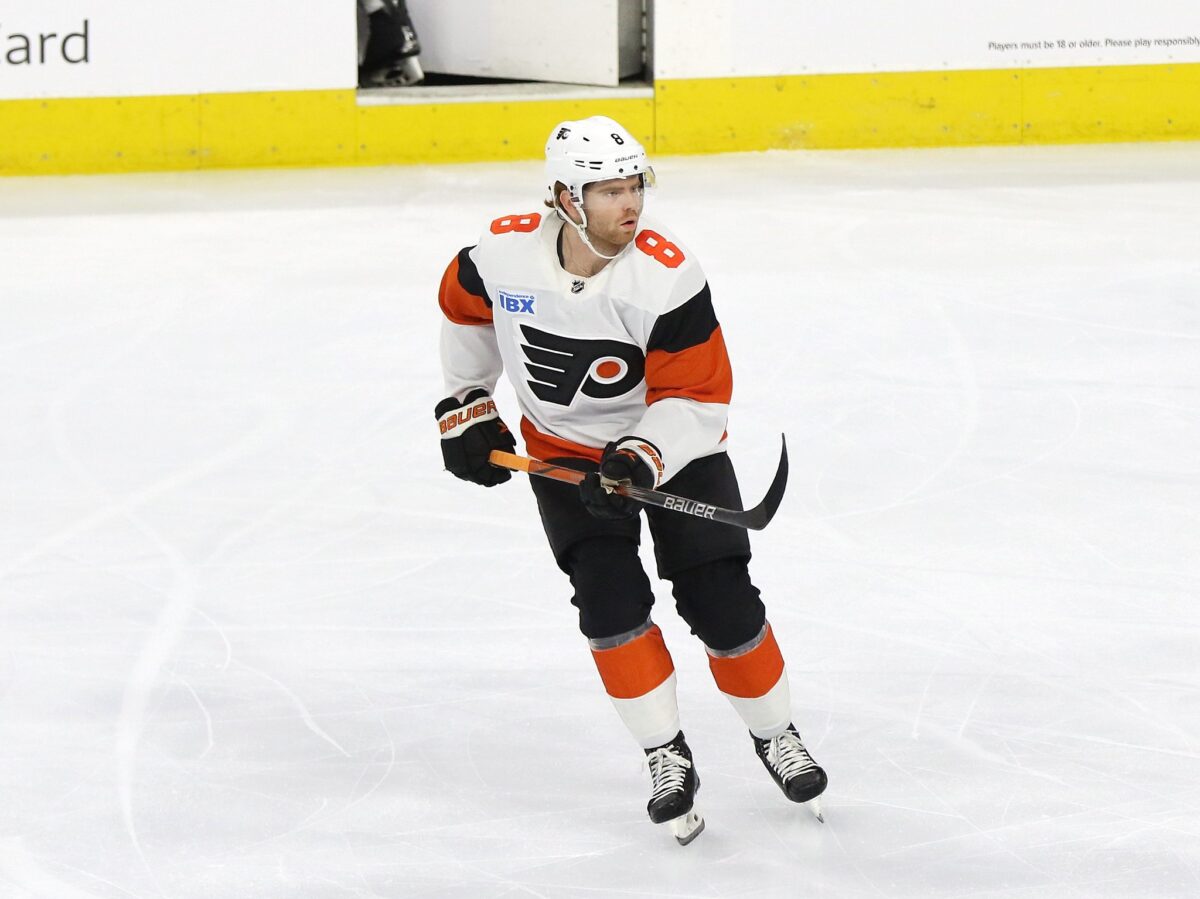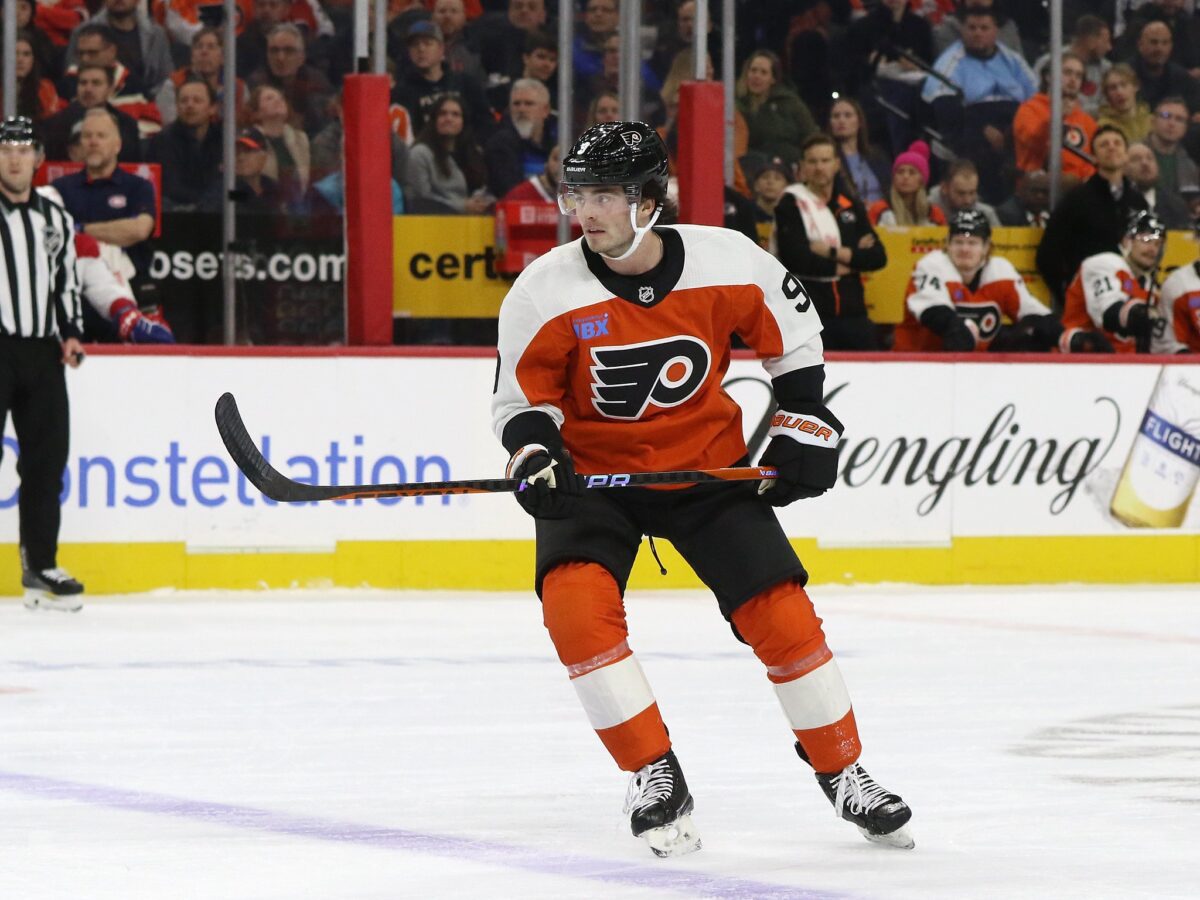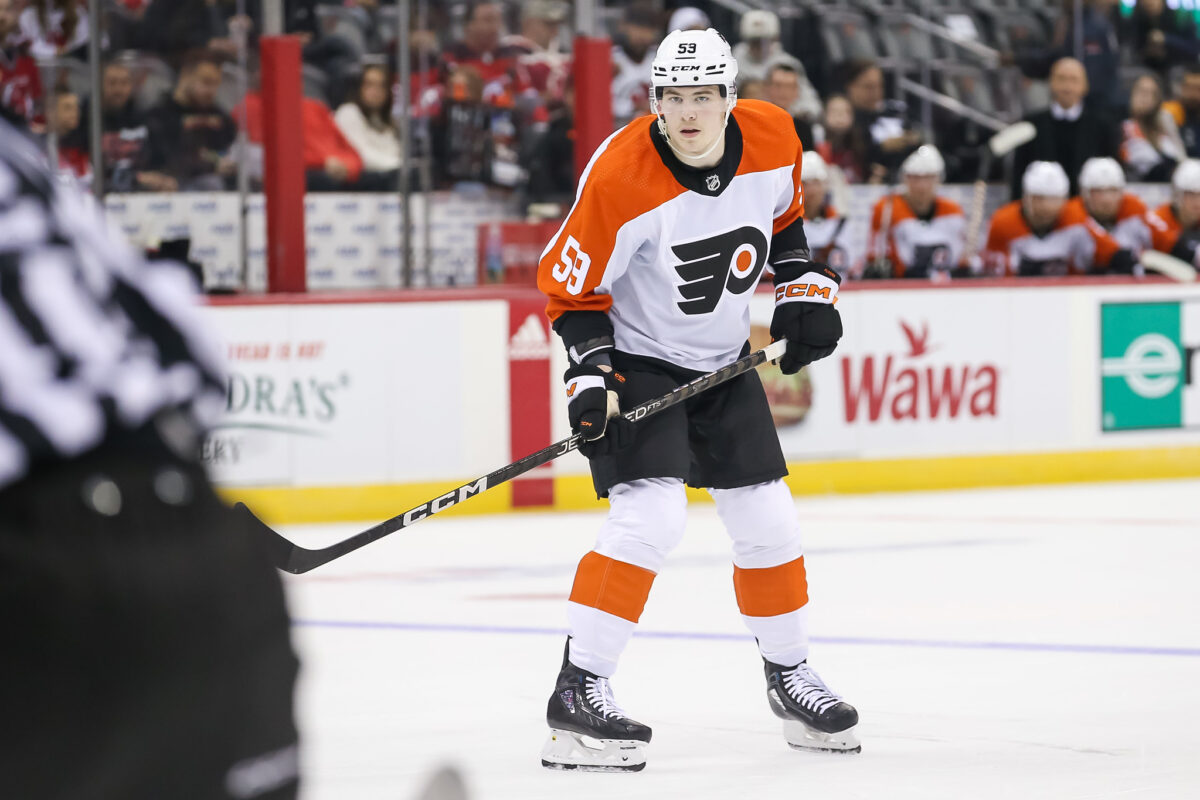Aside from Matvei Michkov and perhaps a player like Tyson Foerster, the Philadelphia Flyers don’t have all too many young players who have the potential to be top-line staples. Somewhat quietly, 23-year-old defenseman Cam York is doing so.
Related: Flyers’ Tyson Foerster Deserves Calder Trophy Consideration
York might not have the elite offensive numbers like Cale Makar of the Colorado Avalanche or the elite shutdown defense of a player like Jaccob Slavin of the Carolina Hurricanes. But what he has done this season — and his career — has been impressive. He could be a quality first-pairing defender when he reaches his ceiling.
York’s Early Strides
York, drafted with the 14th pick in the 2019 NHL draft, took a little while to get regular playing time in the NHL, but the wait has been well worth it. He had just 33 career games played entering his age-22 season in 2022-23 and didn’t even make the opening roster. From there, though, he has been fantastic and continued to evolve his game.

York spent the start of last season in the American Hockey League (AHL), but he worked his way up to the NHL and didn’t plan on giving up his spot. In 54 contests, he put up 20 points and a minus-1 rating on a team that went 31-38-13 on the season. He averaged 19:39 of ice time despite not making the opening roster by the end, working his way up to solid minutes on both the first and second pair.
Last season, York played much of it away from his natural left side of the defense, so it was an adjustment but definitely a welcomed one. He produced well overall and was arguably the team’s best defenseman. A restricted free agent (RFA) in the offseason, the Flyers’ new general manager (GM), Daniel Briere, opted to give him a two-year bridge deal instead of going all in and signing the youngster to a long-term contract.
In 2023-24, York has taken another step in the right direction. He has been much more involved and is a regular on the first pair of a team that has spent the majority of the season in a playoff spot. He is averaging 22:00 of ice time on the season and hasn’t missed a single game. His goals (nine) and points (27) are both career highs, while his blocks (140) through just 68 games are more than he compiled in his entire 87-game career before this season.
York has played a good chunk of time at even strength and has been a staple to one of the NHL’s best penalty kills. Head coach John Tortorella has relied on him more and more, and through that, his performances have gotten better. Ironically, he plays at his best with more ice time.
The Makings of a First-Pairing Player
Getting into some advanced metrics, York passes that test with flying colors, especially when some restrictions are applied. When playing 24 or more minutes of ice time, which are typical first-pairing minutes for a high-end player, he has had great results. For starters, in 12 such games, he has put up seven points and a plus-1 rating. But it goes beyond that.
In just over 189 total minutes of even-strength ice time in those 12 contests, he has an expected goals percentage (xGF%) of 55.9 percent, an actual goals percentage (GF%) of 50 percent, a scoring chances percentage (SCF%) of 51.5 percent, and a high-danger chances percentage (HDCF%) of 58.5 percent. While a somewhat limited sample size of ice time, the numbers are undeniably good — especially considering the high level of competition that comes with top minutes.
Someone like Travis Sanheim, York’s top defensive partner, might be given credit for this. If anything, it’s the opposite.

In an albeit small sample size without Sanheim in the same 12-game sample, which is just over 50 minutes, all of his numbers improve — he has a 75.8 percent xGF%, 66.7 percent GF%, 71.4 percent SCF%, and 83.3 percent HDCF%. That’s to say that York makes the players around him better — that is, in fact, first-pairing material. He is also just 23 years old.
If York gets even more usage, these numbers might regress to the mean a bit, but he is one of few players who can handle a true first-pairing workload. And it’s not like this is out of nowhere. Gradually, he has gotten better as a player.
Looking at the Young Defensemen in the System
The Flyers have some good young players in their system, but whether or not they can become elite players is based more on speculation rather than numbers like it is with York. Defenders for the Orange and Black who can become long-term contributors in the top-four seem to be the following: Jamie Drysdale, Emil Andrae, and Oliver Bonk.

Jamie Drysdale
Starting with Drysdale, his raw talent should take him a long way. His on-ice stats this season have been expectedly poor for the Flyers, but it is essential to recognize that he needs time to be able to take his game to another level. The 21-year-old has plenty of time for growth. Talent is very hard to teach, but defensive strategies can be learned.
If Drysdale can combine his elite offensive instincts with defensive prowess, he could become a legitimate first-pairing player. But until that can be seen, a safe place to put him would be on the second pairing for years to come.
Emil Andrae
Andrae’s ceiling is likely a bit lower than Drysdale’s, but the 22-year-old could be a viable top-four piece. He is a small but physical defender who puts up points. His offensive skills are pretty strong, so that could be his calling card in the NHL.
Andrae played four games with the Flyers this season with underwhelming results in October. In the AHL, he has done well enough to earn another shot with the Flyers sooner than later. He could make the opening roster next season, but it’ll likely be a tougher battle than it was for 2023-24.
Oliver Bonk
Bonk, a 19-year-old defenseman, has done good things in the Ontario Hockey League (OHL) points-wise with 67 points in 58 contests, but he hasn’t necessarily exceeded the 22nd-overall pick the Flyers took him with in the 2023 NHL draft. At this point, it seems as though he could be a top-four player.
Bonk is a decent two-way defender with room for more. His offense has been arguably the best part of his game, but it’s difficult to turn that into NHL offense. It should be a little more time before he truly competes for an NHL roster spot, but his chances of at least making it are good. If he can effectively transition his OHL offense to the NHL, he could end up being a fantastic player.

All of this is to say that, as of now, York appears to be the safest pick for a first-pairing player that the Flyers have. They’re in a rebuild, of course, but there is a good chance they qualify for the postseason. If the norm becomes that they are a competitive hockey team for the next couple of seasons, the Flyers aren’t likely to land another top-pairing defender through the draft.
The Flyers are relying on York to continue to grow, and that’s a great thing. Unless his progression stifles, he could truly be an essential player for the Flyers moving forward. He’ll be eligible for an extension this offseason — another bridge deal is unlikely at this time.
It’s been a long time since the Flyers have drafted a true first-pairing player. From the trials and tribulations of Ivan Provorov to the relatively short Flyer tenure of Joni Pitkanen, drafting defenders hasn’t come easy for the Orange and Black. York might be their first home run in decades, and there’s potential for it to be a grand slam.
